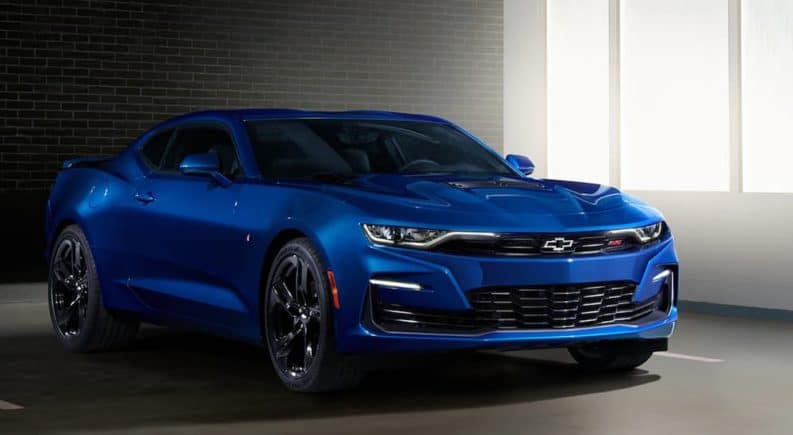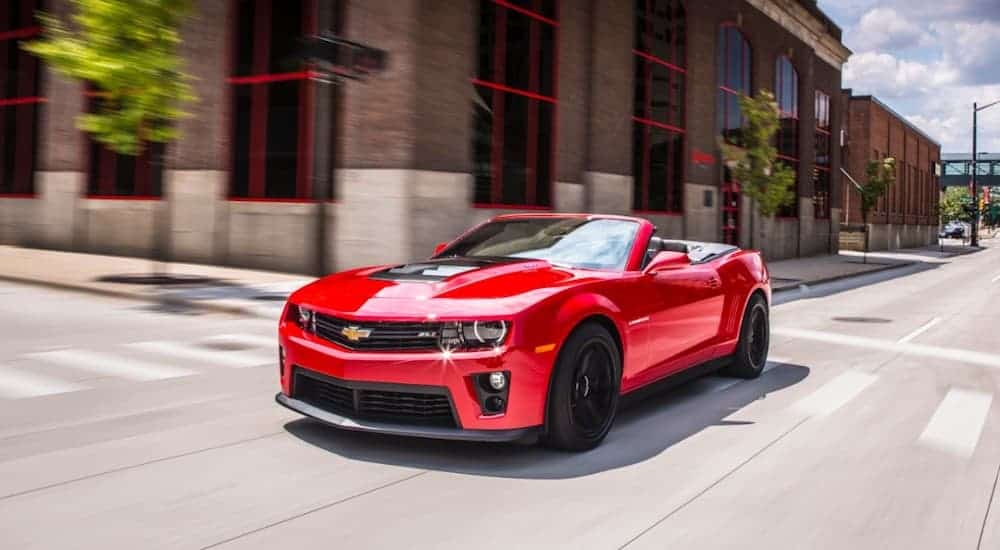Currently, in its Sixth Generation, Chevrolet’s latest version of the Camaro still remains a bit of a mystery. Based on some of the updates for 2019, it is likely that the new 2020 Chevy Camaro will carry over similar safety and tech features from its previous year. A few refreshments are likely, perhaps a redesign of the headlights or slight alterations to the body. Only time will tell exactly what those updates will include. Taking a look back at the evolution of the Camaro since its early inception will help frame the future of this iconic muscle car.
Early Generations of the Camaro
The first Chevy Camaro’s went on sale in 1966. After a year on the market, this midsize muscle car was primed to compete against the 1967 Ford Mustang. Its clandestine release was much anticipated and referred to by auto executives under the codename “Panther.” The name “Camaro” eventually came about as a derivative of the word camaraderie. Competition during the release of the 1967 Mustang became so heated that Chevrolet Product Managers defined Camaro to the press as “a small, vicious animal that eats Mustangs.” Despite this fierce description, the Camaro was branded to portray a sense of kinship between the vehicle and its owner. By selecting a name that begins with the letter “C,” the Camaro fits well with its family of other Chevy vehicles (Corvair, Corvette, Chevelle, etc.).
The First Generation of the Camaro shared the same platform as the Pontiac Firebird, the rear-wheel-drive General Motors F Platform. It was manufactured as a two-door coupe or convertible with several engine options to choose from. Although this model only lasted a couple of years, this classic design from 1966-1969, which eventually helped shape the Fifth Generation several decades later. Its vintage style is an iconic piece of Chevy’s American history.
Generations 2, 3, & 4
The Second Generation of the Camaro came out in 1970. Updates occurred again in 1974 and 1978, resulting in a major overall in restyling throughout this decade. The Camaro grew to become longer, lower, and wider than earlier versions. An air induction scoop hood with an intake door that opened under full throttle was a key addition during the 1980 and 1981 Z28 models.
The Third Generation spanned across one decade from 1982-1992. This Generation underwent more significant innovation, perhaps due to the increased rate of technological advancements of the time. It lost about 500lbs between Generation two and three, making it much lighter and more efficient. The Turbo-Hydramatic 700R4 four-speed automatic transmissions (or five-speed manual transmissions) brought modern fuel injection to the Camaro. Wheels were available as 14″, 15″ or 16″ and the body was restyled as a hatchback. A few different packages came out during this time, including the B4C “police package,” the 1LTE Performance Package, and the 25th Anniversary Heritage Package.
By the time the 4th Generation was introduced in 1993, the Camaro was due for an updated platform. Anti-lock brakes and passenger airbags became standard features. Newer versions introduced different styling features, and a slightly larger engine (3.4 went to 3.6 liter in 1995). Handling and grip were improved using minor changes to the suspension system. The last Fourth Generation Camaro was built in 2002 due to slowing sales, and the shut down of the plant in Quebec, Canada.
The Five Years of the 5th Generation
The 5th Generation ran from 2010 to 2015 and allowed the Camaro to make its comeback. It was named the World Car Design of the Year at the World Car of the Year Awards in 2010. A panel of 82 international automotive journalists came together from 24 different countries to make the decision. Following this win, 2011 Camaro Convertibles were reintroduced on the market. These were offered in the same trim levels as the coupe. But an aluminum brace was added under the transmission, as well as over the engine assembly.
The stylish “carbon flash metallic” exterior marked the 45th edition of the Camaro in 2012. Impressive, 20-inch wheels were included, along with red, white, and blue interior stitching details. The following year, in 2013, the New York Auto Show debuted a return of the Z/28 model Camaro. In every effort to enhance the performance of this 505 horsepower vehicle, the overall weight was reduced by thinning the rear quarter glass, rear seats, and removing sound-deadening features. Paired with a 7.0 liter LS7 V8 engine, this lightweight vehicle was built for speed.
The Camaro Today in its 6th Generation
Chevy launched the 6th Generation Camaro during its pending 50th anniversary at Belle Isle Park in Detroit. By this time, the Camaro’s production had been back in the United States for a while out of the Lansing Grand River Assembly Plant in Michigan. The 2016 Camaro was built with primarily one-of-a-kind components that allowed it to weigh in at less than 200lbs than the version prior. Named “Car of the Year” by Motor Trend, several new tech features provided futuristic updates on an old favorite. Apple CarPlay and Android Auto made the cut for the 2016 Camaro. Three different engine options were to be paired with either an eight-speed automatic or six-speed manual transmission.
Chevy brought back its 1LE performance package in 2017, offering two versions for both the V6 and V8 models. A black satin hood, unique wheels, and other special design elements help distinguish this package. Eventually, the popular 1LE package was made available on four-cylinder models in 2019.
Today, the Camaro offers excellent handling around sharp curves and provides a smooth ride by utilizing an adaptive suspension system. Chevrolet offers excellent value in standard models by including an updated infotainment interface and several safety features. The MSRP range for 2019 was $25,000-62,000, with lots of variation in trim levels and optional add-ons. For the lower end of the price range, drivers can get a combined fuel efficiency of 25 miles per gallon. The six-speed manual transmission operates alongside up to 275 horsepower at 5600 RPM. For a bigger budget, the 2019 Camaro produces 650 horsepower at 6400 RPM, using a 6.2 liter, 8-cylinder engine.
Expectations for 2020 include the addition of LT1 models, which would sit between the LT and SS models. This offers a powerful V8 engine at a low price point. The transmission may be upgraded as well, with more 10-speed automatics replacing the 8-speeds. Rearview cameras will be more widely included to enhance driver safety. For the 2LT, 3LT, and 2SS models, a Shock and Steel special edition may be in the works for future release. Multiple models may also offer a Redline edition, although this is unlikely for the first start of 2020 production.
Color changes will include the discontinuation of Silver Ice Metallic and Mosaic Black Metallic. Rally Green Metallic will be offered as a new exterior color choice. For the interior, red seat belts will become optional for any model, along with red knee pads on specific models. A Tire Fill Alert feature will keep drivers in the know if tires are under inflated or overfilled, taking away the hassle of needing to use a tire gauge. Chevy has a lot of exciting plans for the coming year. Whatever the future holds, one thing is for certain. After decades of refinement, the 2020 Camaro is a vehicle worth waiting for.





